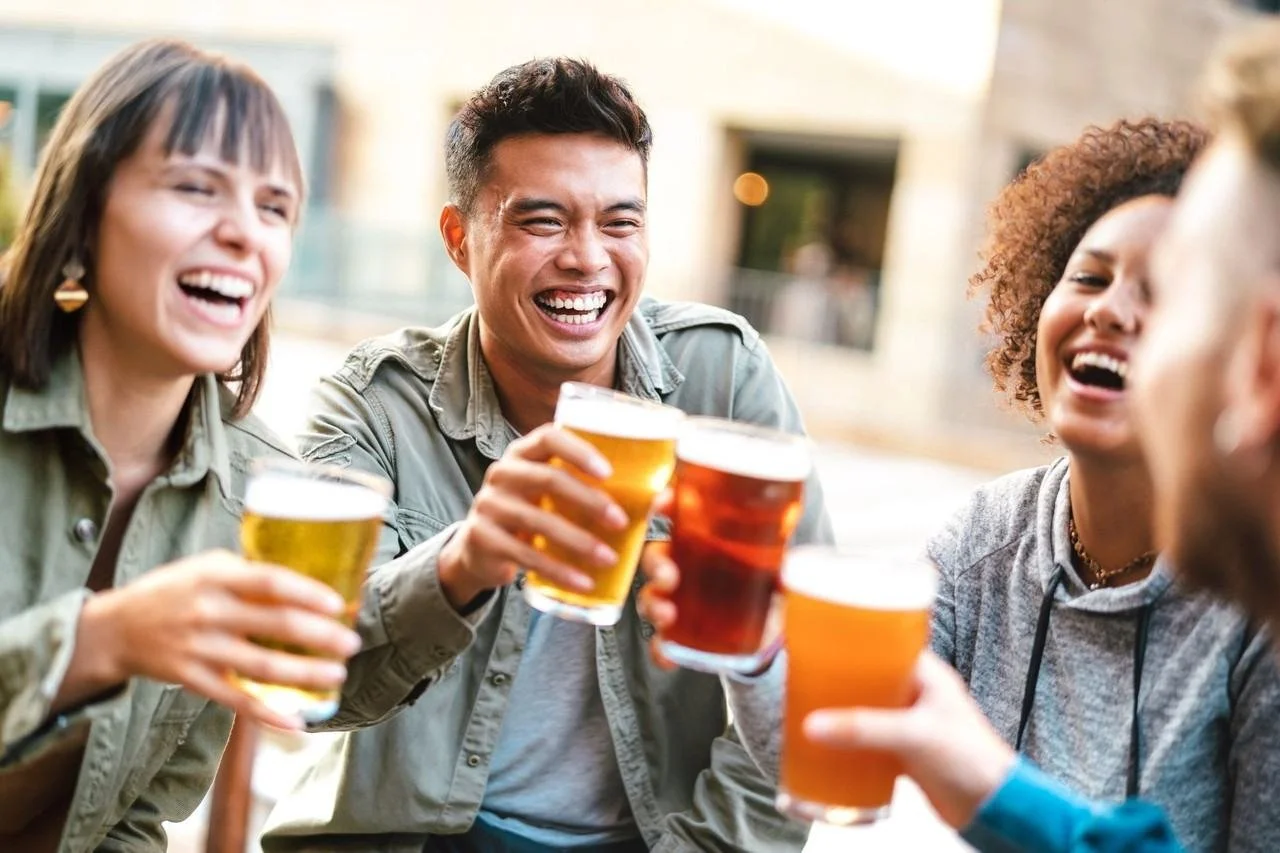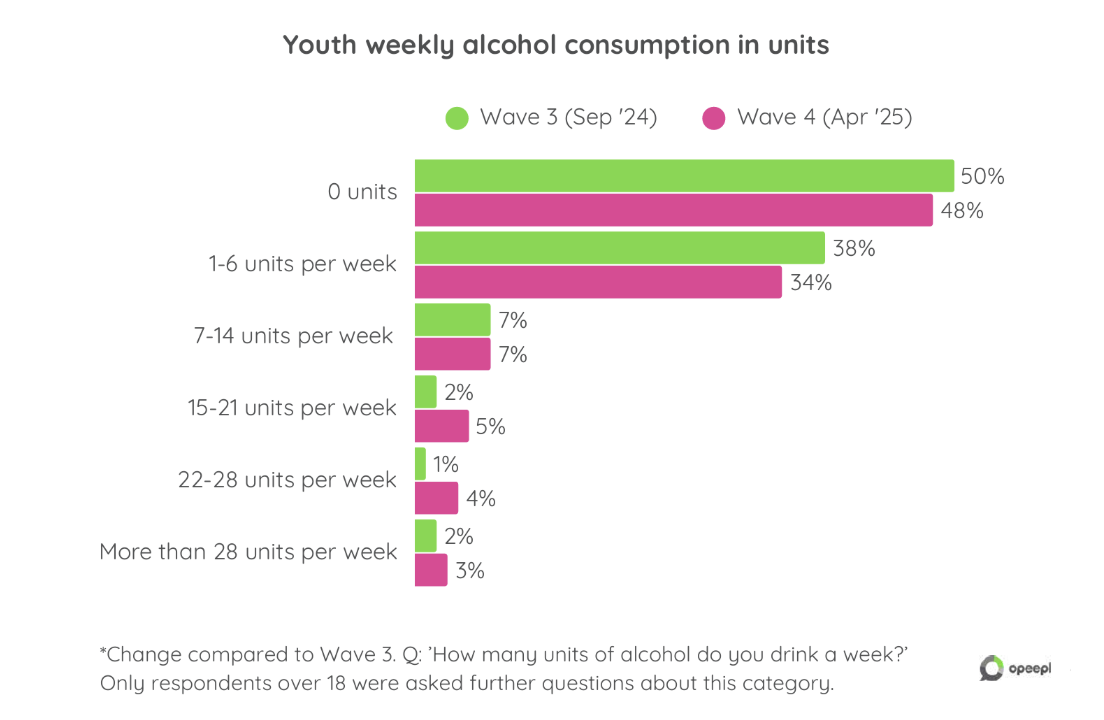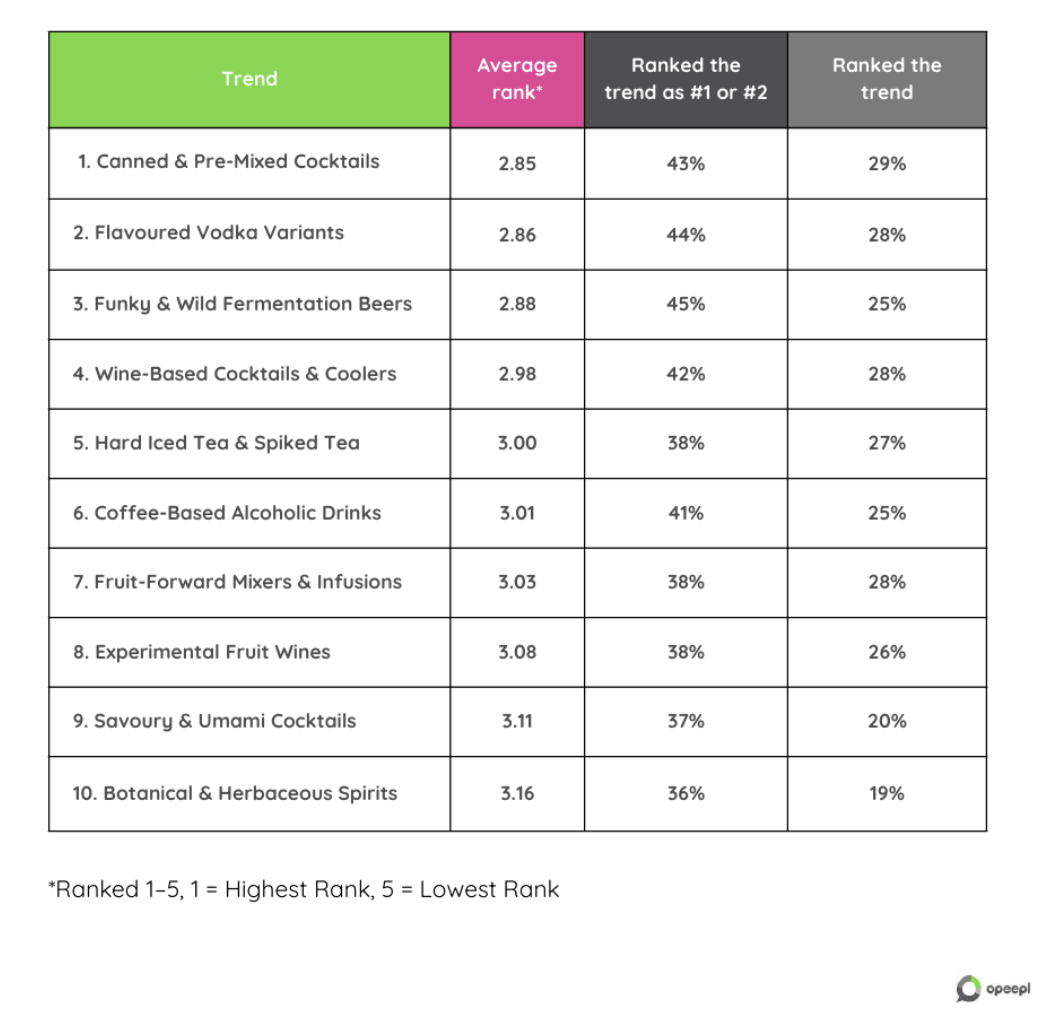
Emerging Trends in Alcohol Consumption Among Youth in 2025
Published: October, 2025
In 2025, young Europeans are drinking less, but enjoying it more. For Gen Z and young millennials, it’s not about partying harder; it’s about drinking smarter.
The Youth Pulse Wave 4 report shows a clear cultural shift: young people still drink, but less frequently, more consciously, and with a growing interest in alcohol-free alternatives. Health, control, and authenticity are redefining what drinking means for this generation.
Let’s explore what the numbers reveal and what it means for the future of alcohol culture.
How Many Young People Drink Alcohol
According to the study, 52% of 18–30-year-olds say they currently consume alcohol. That’s still the majority, but it’s lower than in previous waves, showing a steady decline in regular drinking habits.
Meanwhile, 19% say they don’t drink at all, often citing health, fitness goals, or lack of interest. This group is small but growing, especially among women under 25.
Interestingly, the reasons for drinking have changed, too. It’s less about partying or escaping and more about social connection and relaxation: a way to unwind, not to lose control.
Weekly Alcohol Consumption in Units
When it comes to how much they drink, moderation is the clear trend.
On average, youth consume 5–7 units per week. That’s roughly the equivalent of a few beers or glasses of wine over a weekend, not daily drinking.
Here’s how it breaks down:
48% drink up to 6 units weekly,
34% drink 7–14 units,
7% drink 15–21 units weekly
4% drink more than 22 units weekly
10 Alcohol Trends to Watch in 2025 (18–30 y.o.)
The Youth Pulse Wave 4 report reveals a fascinating top ten list of alcohol trends shaping their choices this year, from pre-mixed cocktails to coffee-based drinks.
Here’s how it breaks down:
Canned & Pre-Mixed Cocktails: Convenience meets quality.
43% ranked these as their top trend. Perfect for festivals, picnics, or relaxed nights in. Craft taste without the bartending effort.Flavoured Vodka Variants: Playful, colourful and easy to mix.
44% of respondents picked them among their top two trends, especially younger drinkers who enjoy playful flavours and easy mixing. From berry to yuzu, it’s all about customising your drink.Funky & Wild Fermentation Beers: Craft goes creative.
45% ranked these as exciting new options. Sour and wild-fermented brews attract those seeking authenticity and local character.Wine-Based Cocktails & Coolers: Light, fruity, and social.
42% highlighted these as a favourite summer drink, sitting perfectly between traditional wine and mixed cocktails.Hard Iced Tea & Spiked Tea: Tea time gets a twist.
38% are into these lightly alcoholic drinks that fit casual, daytime socialising and mindful moderation.Coffee-Based Alcoholic Drinks: Two rituals in one.
41% love coffee cocktails like espresso martinis and cold-brew liqueurs, merging caffeine culture with indulgence.Fruit-Forward Mixers & Infusions: Natural, vibrant, and photogenic.
38% favour drinks infused with real fruit flavours: refreshing, light, and Instagram-ready.Experimental Fruit Wines: Beyond grapes.
38% are drawn to cherry, apple, or berry-based wines, appealing to eco-conscious and locally minded drinkers.Savoury & Umami Cocktails: For the foodie generation.
37% said they’re intrigued by tomato-, olive-, or even mushroom-infused drinks, a bold nod to gourmet experimentation.Botanical & Herbaceous Spirits: Nature in a glass.
36% love herbal spirits like rosemary gin and lavender liqueurs, part of the broader “natural” movement redefining luxury.
Why Youth Are Drinking Differently
The reasons go far beyond health. It’s about identity. Many young adults define themselves by their values: mindfulness, equality, environmental impact, and authenticity. Drinking heavily feels out of sync with that mindset.
They want control over how they feel, how they show up, and how they perform. Waking up clear-headed for work, the gym, or study matters as much as socialising. For this generation, alcohol is losing its “default” status.
This doesn’t mean the end of alcohol culture. It means the beginning of a new culture: one where celebration and self-awareness can coexist.
In 2025, drinking is about choice, not pressure.
This data highlights that binge drinking is declining. Youth are more mindful, they want to enjoy themselves but stay in control. Many young adults associate heavy drinking with anxiety, hangovers, and poor sleep, which no longer fits the wellness-focused lifestyle that’s trending.
It’s no longer unusual to see mocktails and sparkling waters on the table during a night out. The “one more round” mentality is giving way to mindful moderation.
The Rise of Alcohol-Free Options
One of the biggest shifts in 2025 is the growing love for alcohol-free alternatives. The report shows that:
15% frequently choose alcohol-free drinks
23% occasionally choose them
7% plan to do so more often
48% rarely or never choose alcohol-free.
This rise in “sober curiosity” reflects more than health awareness; it’s about control, social confidence, and inclusion. Many young people enjoy alcohol-free drinks because they can still socialise, stay clear-headed, and feel part of the moment.
As a result, the non-alcoholic beverage market is booming. Bars now feature dedicated mocktail menus, supermarkets stock zero-proof spirits, and influencers are promoting mindful drinking as a lifestyle choice.
Would you choose an alcohol-free drink if it tasted just as good? For many young people in 2025, the answer is yes.
Together, these trends show how youth drinking is moving toward creativity, flavour, and experimentation. It’s no longer just about choosing a drink; it’s about curating an experience that feels modern, mindful, and personal.
Final Thoughts
The data from Youth Pulse Wave 4 leaves no doubt: young people are redefining drinking culture in 2025. They value connection, taste, and authenticity, not excess.
They’re drinking less, thinking more, and exploring new experiences that align their values. Alcohol-free is no longer the exception; it’s a symbol of choice.
For brands, the takeaway is clear:
Don’t just sell a drink, sell meaning.
In 2025, youth attention belongs to brands that understand moderation, inclusivity, and creativity.
Watch Our Webinar
Want to explore how Gen Z and young millennials are reshaping the alcohol industry? Watch our on-demand webinar: Youth Alcohol Trends to Watch in 2025.
Discover more trends among 15-30 y.o. in Youth Pulse Report
Opeepl Youth Pulse is a bi-annual study that keeps pulse on the latest developments in the youth market. Discover key youth trends in consumer confidence, media habits, attitudes, values, and five major categories: Food, Beverages, Alcohol, Fashion, and Personal Care.



